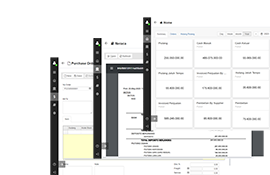
Photo credit: Pexels
How to Create a Chart of Accounts
A well-structured and organized financial system is essential for any business's success. At the core of this system lies the Chart of Accounts (COA).
This article will explore the concept of a Chart of Accounts, its significance, and the process of creating one.
Understanding the COA is crucial for businesses of all sizes, it serves as a roadmap for financial transactions, reporting, and analysis.
Table of Contents:
What is Chart of Accounts (COA)
Chart of Accounts is a categorized list of all the accounts used by a business to record financial transactions.
It acts as a framework that classifies and organizes these accounts, providing a structured overview of the company's financial activities.
Each account in the COA represents a specific aspect of the business, such as assets, liabilities, equity, revenue, and expenses.
Creating a Chart of Accounts
Chart of Accounts is created in a few steps. Here's a simplified outline of the process:
Determine Account Categories
Start by identifying the main categories that align with your business's financial activities.
Common account categories include assets, liabilities, equity, revenue, and expenses.
These categories form the foundation of your COA and will help organize your accounts effectively.
Assign Account Numbers
Assign unique numerical codes to each account within the identified categories.
The numbering system should be logical and consistent, allowing for easy identification and sorting.
For example, assets could be numbered in the 1000 range, liabilities in the 2000 range, and so on.
Define Account Names
Provide clear and descriptive names for each account, ensure that they accurately represent the financial element they track.
Concise naming conventions facilitate understanding and minimize confusion when recording transactions or generating financial reports.
Establish Sub-Accounts (Optional)
If necessary, create sub-accounts to further classify specific transactions within the main account categories.
Sub-accounts allow for more detailed reporting and analysis. For instance, under the expenses category, you might have sub-accounts for advertising expenses, utility expenses, and office supply expenses.
Set Account Types
Assign an account type to each account, distinguishing between balance sheet accounts (assets, liabilities, and equity) and income statement accounts (revenue and expenses).
This classification helps determine how each account impacts financial statements and aids in accurate reporting.
Determine Opening Balances
If you're implementing a new Chart of Accounts, establish the opening balances for each account based on the company's financial position at the start of the accounting period.
Opening balances reflect the balances carried forward from the previous system or the company's financial records.
Regular Review and Adjustments
The Chart of Accounts should be periodically reviewed and adjusted to accommodate changes in the business's financial structure or reporting requirements.
As the company grows or its financial needs evolve, new accounts may be added or existing accounts modified.
A well-constructed Chart of Accounts is the backbone of a business's financial management system. It provides a systematic framework for recording, categorizing, and analyzing financial transactions.
Swift Accounting is a cloud accounting system that helps to manage business finances, stocks, transactions and more. In Swift Accounting, Chart of Accounts can be created only in a few clicks.
By creating a comprehensive COA, businesses can streamline their financial processes, improve accuracy in financial reporting, and gain valuable insights into their financial performance.
Investing time and effort into developing and maintaining an effective Chart of Accounts is crucial for businesses seeking to make informed decisions, track their financial health, and achieve long-term success.





